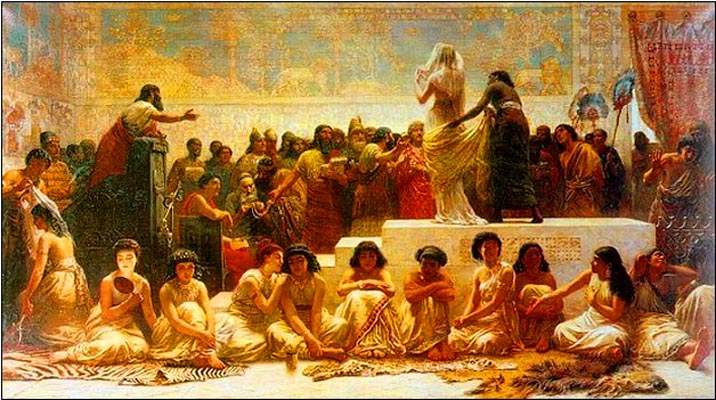
A Literary Study, Part One—
Rhetorical Analysis of Archetype
A shadow of a world more real
than reality itself
| Psychological Dimension |
[3col1]In literature, an archetype is essentially a common or recurring metaphor, a pattern or image that seems to have a sense of the universal and pervasive. Archetype, then, is more than a mere literary image or comparison; rather it is an image that inherently has a sense of source and origin. It is a genesis image. It is an image that is foundational to the experience of life itself. The basic meaning is that of an over-reaching or arching pattern, a prototype governing our understanding of the world.
The Swiss-German psychologist, Karl Jung, depicted archetype as a collective and unconscious memory, one that the human race shared as some past, and perhaps undefinable experience. Although this is not exactly what we mean by archetype in literature, the notion of some foundational experience, some common denominator to life[endcol] [3col2] certainly delineates the idea of archetype. Jung broke radically with many of the notions Freud had promulgated. However, like Frued, Jung considered the stories and images from mythology as providing psychological insight. Indeed, Jung even proposed the archetype as some kind of common denominator of all people, cutting across time, culture, language, gender.
According to Jung, all of us think in pictures especially archetypes. The archetype, then, is innate, functioning as some sort of collective pattern of unconscious thought. Jung argued for archetypes for the self, for the persona, for the shadow, for the animus— all of which constituted a number of categories as well as complex patterns which Jung, appropriately enough, called psychological complexes.[endcol] [3col3]The archetype, however, is more than a psychological or emotional prototype. In logic or argument, archetype functions as a way of reasoning, a way of promulgating an argument. For instance, Socrates talks about a latent memory of the soul, and appeals to that mysterious memory as foundational, as a reality of a higher kind. Such a notion, of course, is not far from the Jugian theory of a collective unconscious. For both, archetype implies a universal common to all men. For Socrates, though, archetype carries the traces of another world, a spiritual dimension. Socrates regarded reality as having four distinct layers: two in the physical or seen world, and two in the abstract or unseen world.[endcol]
[clearcol]
| Shadow of Reality |
Perhaps, we can best summarize this by saying that Socrates argued for a spiritual dimension to the physical world, a world beyond this world. Just as in the physical world, there are shadows and objects, so in the spiritual world there are similar patterns. Socrates also reasoned that what we call physical is but a shadow of a more expansive and eternal reality. A shadow of a horse, for instance, is not the horse itself, and yet, we can recognize the horse from its shadow. If a child sees a shadow of a horse, he does not say, “Elephant, or dog.” He instead says, “Horse!” and immediately begins to look about for the animal. When we see a shadow, we anticipate seeing the reality casting that shadow.
The shadow of the horse tells us there is a horse nearby. Socrates goes further, though, arguing that the horse that casts its shadow is but a shadow itself cast from another world, a reality beyond the physical world. After all, since horses come in different sizes, shapes, colors, characteristics, we are, therefore, compelled to admit there must be a pattern called horse. Call that pattern horse-ness if you wish, but whatever we call it, that pattern embodies all of the qualities that we recognize as horse.
Even a child instinctively acknowledges the silhouette of a higher reality. Admittedly, the powerful and large Clydesdale may not be the swift and statuesque Quarter horse, but both are horses in the same way that a burro, or a pony, or a zebra are horses, at least in a child’s mind. All are silhouettes of a higher unseen reality. Just as the shadow of a horse infers the presence of a horse, so the physical image of a horse infers the presence of an abstract reality from an unseen world. Socrates went a step further and reasoned that the abstract was itself a shadow of an even higher and ultimate abstract, an ultimate spiritual dimension.
What we are saying, though, is that archetype evidences an over-reaching shadow of the existence of a spiritual world. It is as if God has placed into our very souls the latent traces of an unseen reality. When God created man, he created man in his own image. We understand that. When God created the world, he did the same. He created a world in the image of something beyond this world. If man reflects God and God is greater than man, then this world reflects an unseen and greater world. There is the shadow, and there is the greater reality.
The existence of evil, likewise, hints of another world, a world beyond this world. After all, in the last analysis, evil is spiritual, not physical. If a man gets cancer, we do not say the man has somehow become evil. Yet, if a man contracts lust, we describe the man, and what is in the man and what the man does all as evil. The evil within him is spiritual and destroys his soul. The evil may also destroy his body, but not until it has wrecked havoc on his soul. Adultery is not cancer. Cancer may take our life, adultery takes our soul. The Christ depicted evil as having a spiritual origin. “Ye are of your father the devil,” he said, “and the lusts of your father ye will do. He was a murderer from the beginning” (John 8:44). Evil is a sinister invasion from another dimension, and in this case, more real and more hurtful than we can ever imagine. When a man commits murder, it is because murder is inherent in evil. When a man commits adultery, it is because he first lusted in his heart. He opened his soul to an overpowering spiritual and demonic reality. The seen is always because of the unseen. The evil men do is the silhouette of a greater beyond themselves.
[clearcol]
| A Way of Thinking |
Archetype then, is something common and psychological, something more real than reality itself, but archetype is also a way of thinking. Archetype is not just an image or pattern from another dimension. The pattern moves as thoughts, as reasoning. This itself is a paradox for nothing is more invisible and visible than a man’s thoughts. What we do is because of what we have first thought. When we say, “I acted without thinking,” we do not really mean that we responded automatically like some machine. What we mean is that when I insulted you, I had not intended to do so; I spoke before I had thought the matter through.In Critique of Pure Reason, Kant proposed the abstract archetype as the foundation supporting valid reasoning. Admittedly, Kant differed from Socrates in a number of ways, but essentially, Kant viewed archetype as a regulatory principle. In Kant, the emphasis is not on shadow and reality, but rather on the value archetype imparts. In Kant, archetype emerges as a conflict between evil and good. Archetype becomes a value system. Accordingly, then, there must also be a rhetorical element: the universal and eternal, and therefore, the stable and essential. For Kant, archetype represents the very basis of value. Archetype is a pattern that carries with either good or evil and within that pattern emerges a rhetorical element beckoning us toward either that good or that evil.Perhaps, it is here that archetype begins to achieve its literary impact as universal image. If we regard literature as having a persuasive element, a rhetorical dimension, then archetype functions, not only as a universal and shared image, but also as a rational argument in which the model or ideal becomes the basis for persuasive appeal. Those who wanted to murder Christ did so because they followed the archetypical behavior of Satan who would murder all men. Satan abhors God and, therefore despises anything made in the image of God.
[clearcol]
| Anti-Model |
Montaigne (Essais) seemingly also understood archetype as argument by model. Since archetypes are found as dichotomous pairs— of good or bad, of attraction or revulsion, of friend or adversary— such duality of opposites lends itself to choice and persuasion. For Montaigne, though, the anti-model in the archetype pairing was more forceful than the model.Evil may distort good, but good overcomes evil in that evil becomes the image of what we come to abhor. Men may love evil, but they prefer to hide that evil under a cloak of goodness. That is what hypocrisy is all about. And if the evil we do cannot be kept hidden, we want to rationalize the evil away. If I mistreat you, it is because you first mistreated me. You cursed at me, and I rightfully hit you in the mouth because of what you said. A woman abandons her marriage because another man makes her feel more loved. We all have the right to be loved. I stopped going to church because people there hurt my feelings. In every case, whenever we do something wrong, we want to justify that wrong. Evil needs to lie and make us believe that the lie is not really an untruth. Good never needs to masquerade itself as evil. The irony of it all is that good is so powerful and persuasive that evil behavior causes men to disdain the very vileness that evil seeks to promote.The evil or anti-model becomes the basis for men to prefer good. Indeed, we often talk about the predictable outcomes in life. Every mother tells her child, “Live this way, and life will be good for you; live like that, and life will eventually collapse all about you.” Usually, there is a name that the mother will use as a specific example, and more often than not, the image is that of the anti-model rather than the model— “If you keep lying like that, you will turn out just like your uncle!” Hypocrisy is the compliment that evil pays to good.
God spoke to man in words, but his message consistently is couched in archetypes. Language may have its limitations, but God through archetypes speaks to every man wherever that man may have lived, or whatever the language that man may have spoken, and whenever that man may have lived. God is boundless and so is his word. He who made man knows how to speak to man. If a man speaks Chinese, God speaks to that man in the same archetypes as the man who may speak Russian. Both will understand God alike. If a man lived three thousand years ago, God spoke to that man in the same way he speaks to us today. God is not bound by language, by age, by culture, by epoch, by social status. Whether a man is educated or not, the same word penetrates the heart in the same way. Even Moses who received a direct revelation from God understood that revelation in the same way that all men understand God. Archetype is the universal language that God has breathed into man.

